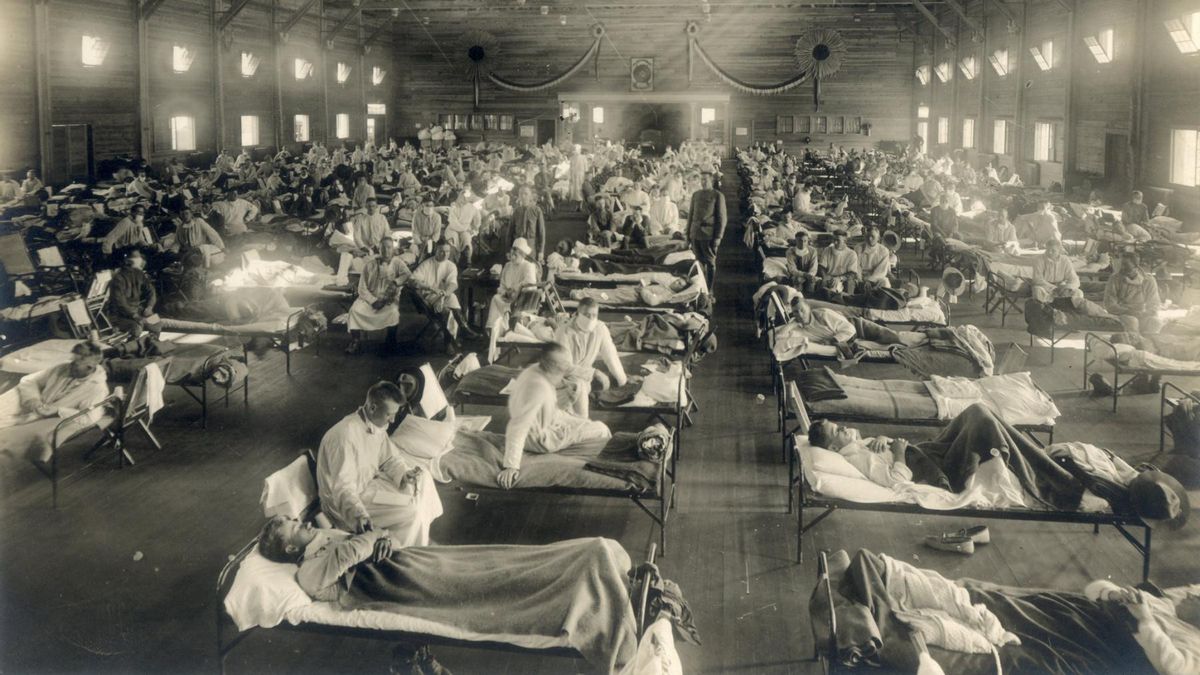JAKARTA - World War I left deep wounds for the whole world. The casualties were many. However, the victims who fell were not only due to weapons, but were exacerbated by the spread of the H1N1 virus. The virus sparked a pandemic. It's called the Spanish Flu. Its deployment was massive due to the high mobility of troops from both blocks: the Allied Powers and the Central Powers. Because of this, the Spanish Flu killed more people than World War I. People also called the Spanish Flu the mother of all pandemics.
The earliest cases of Spanish Flu in history were allegedly sourced at Camp Funston, Kansas, United States (US) on March 5, 1918. It was a training camp for 56,222 United States soldiers. Unfortunate can't be denied. Some soldiers who were actually going to fight in World War I contracted the flu with mild symptoms.
They were just feverish and exhausted. Military doctors also consider it a common cold. In a few days the symptoms are expected to heal by itself. aka harmless. In fact, that was a big mistake. Influenza is more virulent and spreads quickly.
In just three weeks, more than 1,000 US troops contracted the disease. A total of 38 of them died. Especially those who have congenital pneumonia. The local government understands that the illness suffered by US soldiers is not just any flu. There are great indications that US soldiers have contracted a new type of influenza virus. But the government chose to remain silent.

They don't want news of a new flu outbreak to spread across the US. Those who have the power are afraid that the plague can disturb the mentality of other soldiers who are going to war. The neglect of the US government then made the whole world pay for it. The new type of Influenza virus spread rapidly, as US troops moved to Europe.
“But it was Camp Funston that made the virus spread so massively. This could not be separated from the swift flow of soldiers in and out of the camp to Europe. They also act as an active 'carrier' of the influenza virus. From Camp Funston, the influenza virus spread rapidly to New Jersey, South Carolina, Colorado, and other parts of the Americas."
“On March 18, 1918, reports emerged of how the influenza virus had attacked American military posts in Camps Forest and Greenleaf in Georgia. Entering April 1918, transmission cases in America continued to increase, from 50 states in America, as many as 30 of them reported cases of influenza and pneumonia in their regions," said historian Ravando Lie in the book War Against Influenza: Spanish Flu Pandemic in Colonial Indonesia 1918. -1919 (2020).
The US army is also behind the wave of the increasingly massive influenza virus spreading into Europe. France is the entry point. All because of the involvement of the US as part of the Allied Powers (France, Britain, Russia, etc.) against the Central Powers (Germany, Bulgaria, Turkey, and so on). Even the US involvement must be paid dearly. Influenza virus has spread throughout Europe. then, other continents.
The influenza virus that infected Europe was only known as a pandemic when the Spanish media reported it. At that time, almost no media reported the existence of the virus. This is because the main focus of news coverage is more on the state of war. From there the pandemic became known as the Spanish Flu.
“The virus spread as the soldiers moved to France, then to Portugal and Spain. The war situation made the epidemic that began to spread be censored from the mass media. Only Spain, a neutral country with an open press, is reporting the influenza pandemic on a large scale."
"That's why the name Spanish Flu is attached to this disease, even though the Spaniards themselves prefer to call it French Flu," said Ancestor Kasih Dewi Merdeka in his writing in Tempo Magazine entitled 1918-1919: Like Dry Grass ignited by Fire (2020).
More Deadly Than World WarSince becoming a pandemic, the debate regarding the origin of the virus has been increasing. Various other versions also mention that the Spanish flu did not come from America, but Sweden or Russia. All these assumptions further add to the mystery of the origin of the Spanish Flu which is estimated to have infected more than 500 million people in the world.
That figure was equivalent to the world's population at that time. Those belonging to the group susceptible to contracting the Spanish Flu were divided into three groups. First, patients aged under five. Second, the age of 20-40 years. Third, age over 65 years.

The most astonishing fact is that the Spanish flu could have claimed more lives than World War I. The toll from the Spanish Flu was in the range of 21-50 million people.
Meanwhile, World War I, in official records, said the victims were 9.2-15.9 million people. For this reason, the Spanish Flu became the deadliest flu in world history.
“However, the peak of the World War was the Spanish Flu (Spanish Flu) in 1918-1920, which later turned into The Great Depression until the 1930s. This Spanish Flu epidemic cost more lives than the World War itself.”
“This flu has undergone a genetic mutation that makes it far more dangerous than the common cold virus. The Spanish Flu has infected more than 500 million people worldwide, including people in remote Pacific islands as far as the Arctic. In fact, historians estimate that between 21.5 and 50 million people have died around the world," concluded Mukhaer Pakana in the book Pandemic Corona: Deglobalization Virus, the Future of the Global and National Economy (2020).
The English, Chinese, Japanese, Arabic, and French versions are automatically generated by the AI. So there may still be inaccuracies in translating, please always see Indonesian as our main language. (system supported by DigitalSiber.id)









